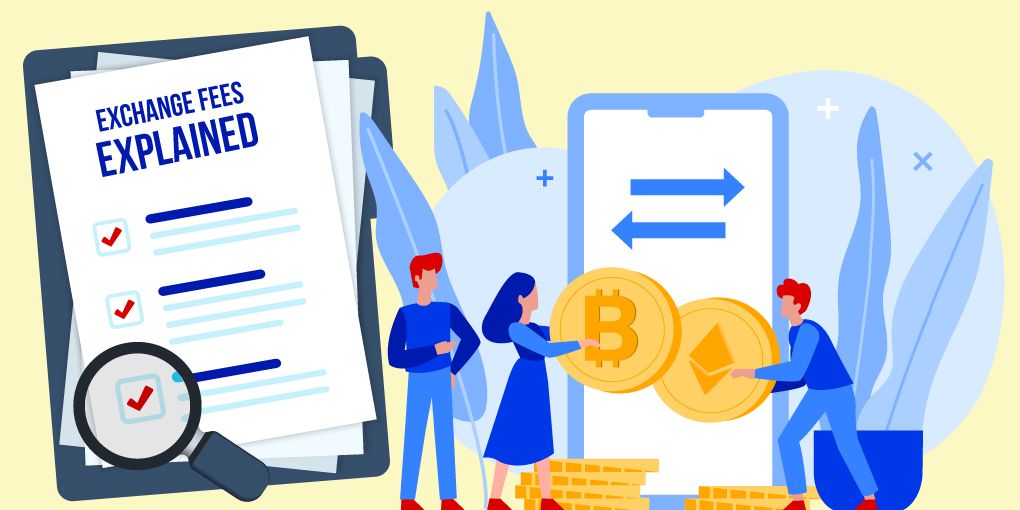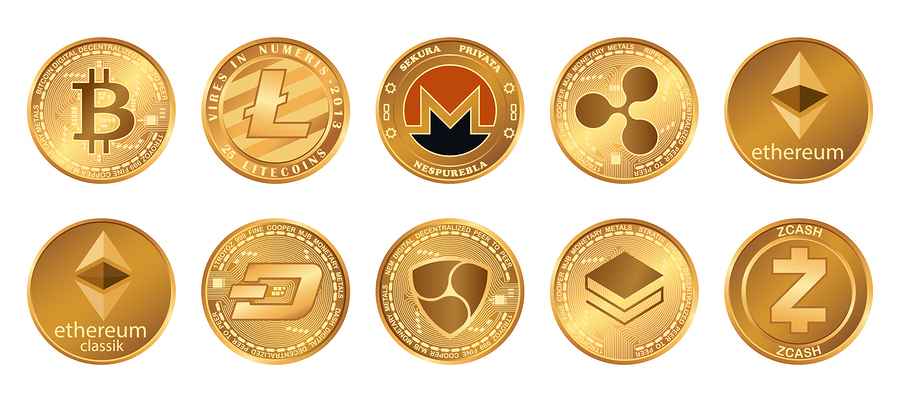Unveiling the Mystery: 7 Hidden Fees Lurking on Crypto Exchanges
Ever trade crypto and later find your wallet lighter than expected? Hidden charges got you. In the fast-paced crypto world, types of hidden fees on crypto exchanges can sneak up on you. As a seasoned trader, I’ve seen plenty. Today, I’m revealing the seven sneaky fees that take a bite out of your funds. Knowledge is power, and I want you to have it. Stay alert for these quiet cash-grabbers. From sly withdrawal thresholds to crafty network fees, I’ll guide you through the maze. Ready to protect your coins? Let’s lift the veil on these hidden costs.
Trading Fees and Commissions Explained
Understanding Maker-Taker Fees in Crypto Exchanges
Do you know about maker-taker fees? They impact how much you pay to trade crypto.
Maker fees apply if you add liquidity to the market. So, when you set a trade that doesn’t fill right away, like a limit order under the current market price, you’re a “maker,” and you often pay less.
Taker fees come into play when you take liquidity away. This happens when you place an order that fills immediately at the current market price. For this, you often pay more.

Think of it as a reward system. Exchanges want people to make the market richer. They entice you with lower fees to do this.
Crypto exchanges use maker-taker fees for a reason. They aim to fuel constant activity. By having different fees, they control the market’s supply and demand.
But here’s the thing—these fees aren’t the same everywhere. Each crypto exchange sets its own rates.
Spotting Variations in Trade Commission Rates
Trade commission rates are tricky. They are how exchanges make money on your trades.
Let’s break it down. Every time you trade, the platform takes a cut. These are the trade commission rates.
What’s tough is that these costs can change based on your trade’s size. Or even how much you’ve traded lately.
Some crypto exchanges lower the rates if you trade a lot. It’s their way of saying thanks for doing business with them.
Others may change fees based on the coin you’re trading. Or the time of day. Or how the market’s doing.
But remember, not all is as clear as daylight. Some exchanges sneak in other surcharges. Look out! These can hit your wallet hard.
Think of it like ordering a pizza with extra toppings. Each topping costs more. Before you know it, your cheap pizza is now a pricey meal.
In crypto, these extra “toppings” are things like:
- how fast you want a trade to happen
- moving money in or out
- turning your crypto into real money (fiat)
Beware, some fees even come just for keeping your account open or for not trading enough.
Be a smart trader. Always read the fine print. Know the fees. This way, you can keep more of your money.
In summary, when dealing with crypto exchanges, it’s crucial to:
- Know maker-taker fees and how they work.
- Understand trade commission rates and what affects them.
- Watch for sneaky extra charges that can add up.
Trading isn’t free, but with knowledge, you can cut down on those pesky costs.
Withdrawal Woes: Navigating Unexpected Charges
The Reality of Withdrawal Thresholds and Associated Fees
When you move your money out of a crypto exchange, you may get a shock. Some exchanges have withdrawal thresholds. This means you can’t take out small amounts. They force you to hit a certain level before you move your funds. And yes, they charge you fees for this too. These are often flat fees. You pay the same cost whether you move a little or a lot. This can eat into your funds if you’re not moving much.
But why do they do this? The simple truth: It’s pricey for exchanges to process these transactions. They cover their costs with these fees. Yet, most folks don’t know about them until it’s too late.
For example, say you want to withdraw your Bitcoin. You might see a mandatory fee of 0.0005 BTC. Doesn’t sound like much, right? But if Bitcoin’s price soars, that fee becomes a bigger piece of your pie. It’s like giving away a chunk of your cake every time you eat a slice.
Identifying High Withdrawal Fees for Small Transfers
Now, there’s another kicker. Sometimes the smaller your transfer, the more it stings. That’s right. Withdrawing a small amount of crypto can cost you more in fees relative to your transfer size. You lose a bigger percentage of your funds.
Let’s break this down. Imagine two friends, Alice and Bob. Alice withdraws a small amount, and Bob takes out a larger sum. Both pay the same fee. But Alice sees a bigger part of her money vanish in fees because she moved less. It’s like being charged the same fare for a short ride or a cross-town trip in a cab.

This isn’t fair, right? You bet. Many exchanges don’t tell you upfront about these high costs. That’s why you need to read the fine print. Always check the fees section before you commit to a platform. You don’t want to leave money on the table.
And watch out for flat fees. They hit small transfers the hardest. A flat fee could be a set dollar amount or a fixed fraction of your crypto. Either way, it can make a serious dent in your transfer, especially if the market is down.
In short, when it comes to moving your money, knowledge is power. Keep an eye on those pesky withdrawal thresholds and fees. They can chip away at your crypto without you even noticing. Always stay informed, and don’t let those hidden costs catch you off guard. It’s your money, so make sure you keep as much of it as you can.
Deposits and Other Operational Charges
Hidden Costs in Crypto Deposits and Minimum Balances
Do you know some crypto exchanges charge you just to hold money with them? Yes, it’s true. They call it a minimum balance fee. If your account dips below a set amount, they hit you with a fee. Now, I know what you’re thinking. You’re just parking your digital coins, so why should it cost you? Well, exchanges do this to make sure they’re not using their resources on small accounts. It’s sneaky, but it gets worse.
Some also slip in charges for depositing money. That’s like a cover charge at a club, but you’re not even getting in yet; you’re just standing in line! It’s key to check an exchange’s fee policy before joining. Remember, every buck counts in crypto!
Network Fees and Their Impact on Asset Transfers
“Network fees in cryptocurrencies, what’s that about?” a friend asked me recently. Think of it like a toll on a bridge. Every time you send crypto, you’re crossing that bridge, and there’s a toll. It’s what keeps the blockchain running smoothly. But here’s the kicker: these fees can change a lot, like gas prices.
Let’s break it down. These charges depend on how busy the network is. More traffic means higher fees. It’s all about supply and demand. You may not even see this fee until you’re about to send your crypto. And it isn’t small change, either. It can make a serious dent in your wallet, especially if you’re moving assets all the time.
So, always keep an eye on those network fees. They can sneak up on you like a ninja in the night. And when they strike, it’s your balance they’re after! Stay alert, check often, and never get caught off guard by those sneaky network tolls.
In this world of digital coinage, staying informed and vigilant is your best defense against these hidden, and often surprising, operational charges. Whether it’s a sneaky fee for keeping your balance too low or a toll for moving your assets, knowledge is power! Keep these insider tips in mind, and guard your crypto from those unwanted charges.
Additional Charges That May Surprise You
Unraveling Inactivity and Maintenance Fees
You’ve noticed, right? Your crypto account might cost you, even when you’re not trading. Check for inactivity fees. Some exchanges charge you if you don’t trade for a while. Yep, you pay just for keeping your account open.
So, what about maintenance fees? These little pests are like rent for your digital wallet. They keep your account safe and ready. But let’s be clear, not all exchanges charge them. You should know what you’re paying for.
Understanding the Costs of Liquidity and Slippage on Trades
Here’s another kicker: liquidity and slippage. These terms sound dry but stick with me. Liquidity is all about how quick you can buy or sell without moving the price too much. Good liquidity means you trade at the price you want.
But slippage waits around the corner. It’s the gap between the price you expect and what you actually get. A busy market might make you pay more or sell for less. Why? Prices can move in a blink.

Exchanges have to match buyers and sellers. This matching game costs money. When trades are big and the market’s wild, the price slips. It slips from under you and you feel it in your pocket. Some exchanges help reduce slippage, the good ones. But even then, sometimes slippage just happens.
Imagine this: you spot a super price for Bitcoin. You click to trade, but hold on! The final price dips your toes in cold water. It’s lower than you saw a second ago. That’s slippage my friend.
And remember, exchanges can be sneaky. They might not talk much about these costs. They add up, and suddenly, your profits look slim. Always peek at the exchange’s fine print. Those terms and conditions hold secrets.
Liquidity providers are the unseen heroes here. They keep the market ready to go. Think of them like shopkeepers stocking shelves before you walk in. And yes, they take a cut. It’s only fair. But that cut also comes from your pocket.
Here’s the deal. Good trading is like a clear path through a jungle. Hidden fees, slippage, and low liquidity? They’re like vines across your path. Choose exchanges that keep that path clear. Your trades will thank you for it.
Listen, crypto trading costs can sneak up on you. It’s the secret whispers of the market. But you can be the smart one. Keep your eyes wide open for these hidden transaction fees crypto traders face. Watch out for unexpected withdrawal charges and exchange platform surcharges. Fee structure transparency in crypto is what you want.
Hidden costs in crypto swaps are like dust in your gear. If you don’t clean it up, it’ll grind your profits down. And those sneaky crypto fees like gas fees for smart contracts or dusting fees on crypto platforms, they can surprise you.
So let’s sum it up. Watch out for inactivity and maintenance fees. Get to know liquidity and brace for slippage. The crypto jungle is thick, but you’ve got this. With each trade, you’re getting sharper, savvier. Ready to tackle those hidden fees head-on.
We’ve covered a lot in this post about costs in crypto trading. You now know how maker-taker fees can impact your trades. We also explored how trade commissions change. Remember the pain of stumbling on high fees just to get your money out? We talked about that too, looking at withdrawal thresholds and small transfer fees.
Deposits can sneak up with charges too, like hidden costs and network fees. And, we’ve seen sneaky charges like inactivity fees and costs that come from liquidity issues.
Always keep your eye out. Fees shouldn’t eat up your crypto gains. Do your homework, watch out for these tricky charges, and trade smart. Your wallet will thank you!
Q&A :
What are some common hidden fees to watch out for on crypto exchanges?
Hidden fees on crypto exchanges can quickly eat into your profits if you’re not aware of them. Some of the more common ones include withdrawal fees, which can vary significantly between exchanges, and transaction fees that may not be apparent at first. Additionally, exchanges may charge for deposits, currency conversion, and inactivity. It’s crucial to read the fine print and understand the fee structure before starting to trade.
How can hidden fees affect your trading experience on cryptocurrency platforms?
The impact of hidden fees on your trading experience can be significant as they can reduce your overall returns and complicate the cost analysis of trades. For instance, high withdrawal fees might discourage you from moving your funds, while unexpected transaction fees could make small trades less viable. Being aware of these fees is important for developing a trading strategy that maximizes profits and minimizes unnecessary costs.
Are there any crypto exchanges without hidden fees?
While it’s challenging to find crypto exchanges that are entirely free of hidden fees, some platforms pride themselves on transparency and keep such charges to a minimum. Some exchanges offer a fee schedule that clearly outlines all potential costs. Users looking for exchanges without hidden fees should research and compare various platforms, looking for ones that are upfront about their pricing structure and fees.
What strategies can be employed to minimize hidden fees on crypto exchanges?
To minimize hidden fees on crypto exchanges, start by doing your homework: compare fee structures, read user reviews, and look out for any red flags in the exchange’s terms and conditions. Consider consolidating trades to reduce transaction volumes, utilizing exchanges with lower withdrawal costs, or even participating in exchange loyalty programs that may offer reduced fees as a perk. Always stay informed about fee changes and adjust your strategies accordingly.
Where can I find the fee schedule for a cryptocurrency exchange?
Typically, the fee schedule for a cryptocurrency exchange can be found on its official website. Look for sections titled ‘Fees’, ‘Pricing’, ‘Costs’, or similar on the homepage or within the platform’s FAQs, help center, or user agreement. In case the information is not readily available, consider reaching out to customer support for a comprehensive breakdown of fees to ensure you’re not caught off guard by any hidden charges.


